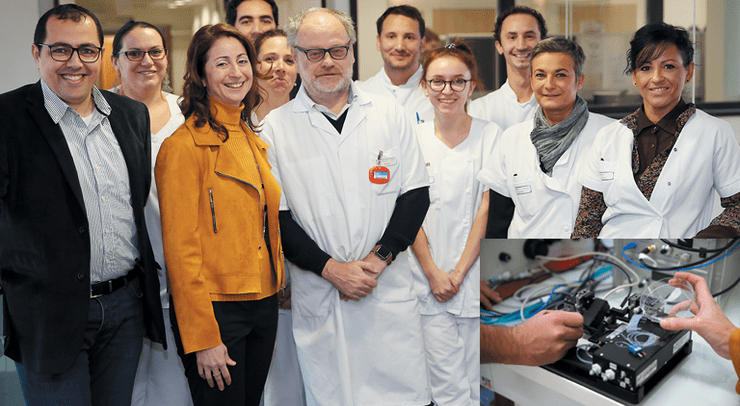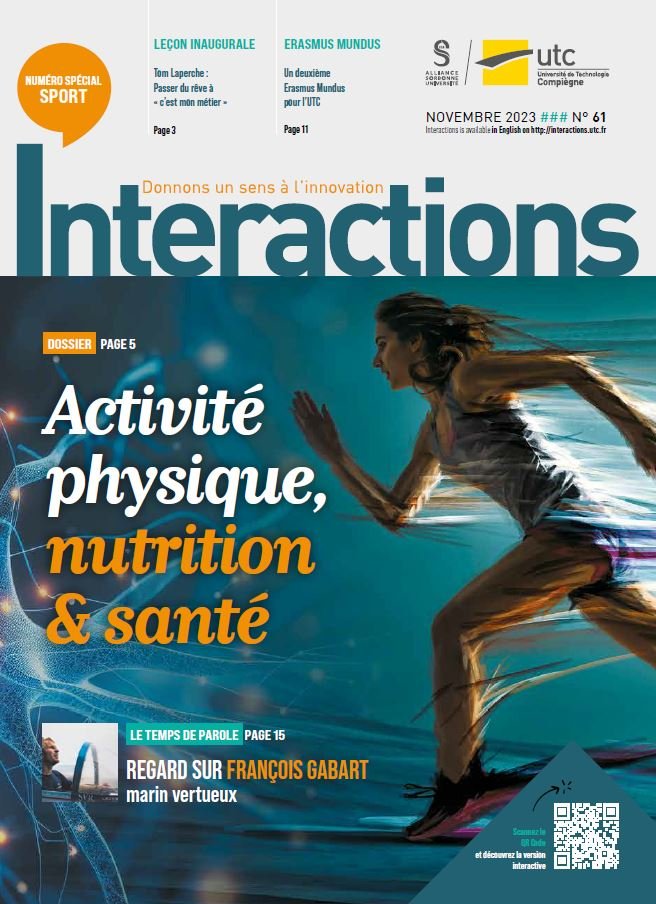
Sabine Bensamoun, a research scientist at CNRS, has been coordinating a team of close on 40 persons in the joint CNRS-UTC-BMBI Lab since January 2018. Their research focuses on two main themes – elastographic analysis of muscle and liver tissues and the role played by the TIEG1 gene in muscles. Interactions presents her portrait: a woman with an ingrained inclination for research.
It’s was when she returned to France in 2006 after completing two years in Postdoc work at the Mayo Clinic in Minnesota, USA — a world-class medical research unit — that Sabine Bensamoun launched her two research programme themes. These programmes were implemented with the active help of the Mayo Clinic and numerous other partners. Sabine Bensamoun had not come back empty-handed from the USA.
The Mayo Clinic recently developed a module – coupled to MRI (magnetic resonance imaging) analysis — aimed a characterizing the mechanical and functional properties of the human liver. The expression here is magnetic resonance elastography (MRE). The aim, as Sabine Bensamoun sees it is “to establish a better diagnosis as to the severity of the pathologies detected, to improve on patient monitoring, personalizing treatments, etc.” The MRE protocol still remained to be certified. UTC is registered as one of the ten research units in the world selected for certification (and the only one in France) that possesses an MRE setup. After years of research, the data and results were analysed at the Mayo Clinic. For all parties involved the wager paid off, including for UTC. That was how MRE became a more efficient, less invasive diagnosis tool, addressing cases of liver fibrosis.
And this was how Sabine became interested — in the framework of a resrecah contract with another partner, Echosens Ltd – in another liver pathology, viz., steatosis, a term denoting the percentage of fat in a liver. A prototype setup, called ‘Fibroscan”, has been made available to her research team and has already provided some highly conclusive results.
In 2013, the MRE and Fibroscan module platform was installed at the Clinique Saint-Côme, thanks to the vigorous commitment of Dr Charleux and all the Saint-Côme teams, the practitioners, the ‘admin’ staff and the technical support personnel. “The clinical trial period has begun, with a selection of some 200 patients”, underlines Sabine Bensamoun.
Two other projects, related to muscle fibres, have been launched too. The first is under way at the Saint-Côme Clinic, with an MRE setup devoted exclusively to muscle studies has been installed and concerns muscular ageing and Duchenne muscular dystrophy. Two publiciations¹, 2011 and 2015 respectively, set out the first results of the research programme. The second characterizes face muscle activities, and is a study in collaboration with surgeons Professors Devauchelle and Constans at the teaching hospital in Amiens.
We should bear in mind that Sabine Bensamoun’s PhD thesis has, as its title, “Multi-scale characterization of mechanical and morphological properties of the musculo-skeleton system”. In other words, it dealt with bone, tendon and muscular tissues. During her two year spell as a Postdoc at the Mayo Clinic in the USA, Sabine worked on bone and tendon ageing, notably with Professor Spelsberg, who discovered the TIEG1 gene. “In order to study the role played by this gene in bone tissues, we used TIEG1 KO mice created specially at the Mayo Clinic, and which did not possess this gene”, she adds. She managed to bring back some specimens of the IEG1 KO mice offspring, which are registered under Mayo Clinic property rights, and pursued her investigations on the TIEF1 gene with UTC team members, Philippe Pouletaut and Malek Kammoun, examining in particular the role of the gen is certain human muscular disorders. Clinical studies are under way in relation to illnesses such as osteoporosis, cardiomyopathy, and cataracts or as markers for certain forms of cancer (breast, ovary). We now know that absence of TIEG21 leads to muscular hypertrophy with an alteration of shape and activities of the mitochondria in cells the main role of which lies in cell ‘respiration’ and hence in the compete respiratory system. Sabine proves tireless when it comes to the advancement of science and she has thus far been able to mobilize 5 research teams in France and 3 more in Europe (in Germany, Hungary and Estonia), to try to identify the mechanisms and operational mode of thyen TIEG1 gene, which raises, she thinks, a key question: what role does absence of TIEG1 (or its sub-expression) play in certain muscular disorders such as the Duchenne muscular dystrophy, or mitochondrial myopathy…? What is the driving force and wish of Sabine Bensamoun? They will be to reinforce and stabilize in time her research team(s) so as to progress in her analysis of the TIEG1 KO strain of mice. Failing which, the results already obtained will be welcomed by the Mayo Clinic enabling it to identify — in the mid-term — new therapeutic strategies to address muscular illnesses or exercise intolerance.




